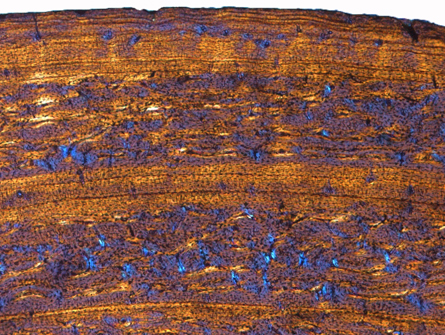Life stories written in mammal bones are being used to debunk a key argument for cold-bloodedness in dinosaurs.

Annual growth lines etched in the femurs of 115 wild warm-blooded mammals such as giraffes, reindeer and gazelles are similar to those previously seen in the bones of dinosaurs and other reptiles, researchers report online June 27 in Nature.
“People always said that mammals do not show these lines,” says study lead author Meike Köhler, a paleontologist at the University of Barcelona in Spain. This assumption is “like a myth that’s going around; you read it everywhere,” she says. “But people haven’t really studied mammals.”
In reptiles, including dinosaurs, yearly cycles of growth and nutrition are stamped in the bones like the rings of a tree. In fat months, animals pack on blood vessel-rich bone tissue, and in lean months they skimp, laying down only thin sheets. Under a microscope, the slender sheets of bone look like dark lines. Because these “lines of arrested growth” or “rest lines” stripe their bones, some scientists assumed that dinosaurs, like surviving reptiles, were cold-blooded. But the new work shows that warm-blooded mammals have banded bones, too.
Every mammal Köhler’s team examined showed cyclical growth: fast and furious when food was plentiful, slow and sluggish when resources were scant. What’s more, the rest lines from their specimens looked just like those seen in dinosaur fossils.
“It’s probably not going to close the debate whether dinosaurs were warm-blooded or not,” says paleontologist Martin Sander of the University of Bonn in Germany, “but the argument that [rest lines] mean cold-blooded is certainly not valid any longer.”
Köhler’s team analyzed bone slices — as thin as strands of human hair — from 41 species of ruminants — mammals with four-chambered stomachs — and 23 different climate zones, from the polar tundra of Norway to the humid subtropics of South Africa. “The sampling itself is amazing,” Sander says. The Institute of Zoology at the University of Hamburg donated most of the skeletal specimens from its Oboussier collection, a vast bunch of now-endangered and protected African animals gathered in the 1950s through the 1970s.






